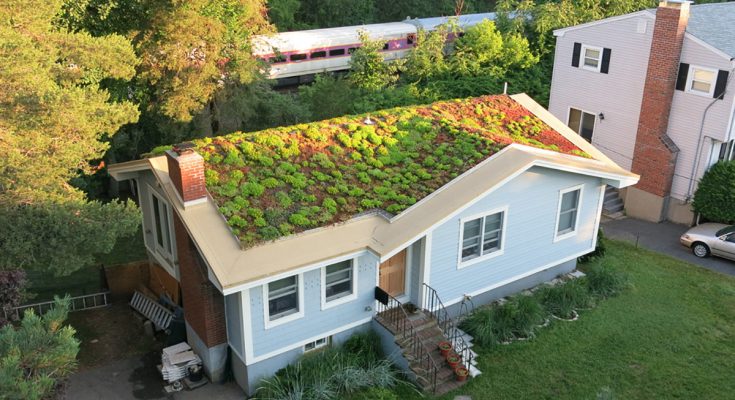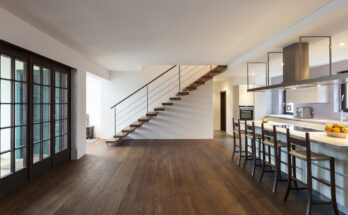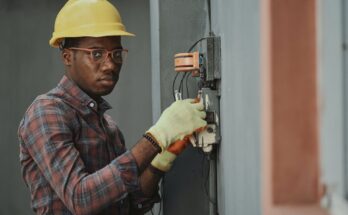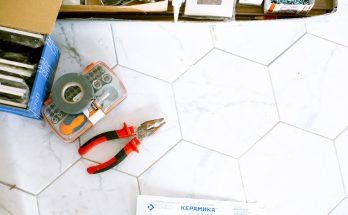Also referred to as an eco-roof, a green roof is a surface of vegetation planted above a water-resistant setup and stationed on a level or moderately slanted roof. A green roof is therefore organic, with the plants on it being either food crops or non-functional but beautifying vegetation. There are varying kinds of this unconventional roof.
What Are the Various Kinds of Green Roofs?
There are numerous ways in which these roofs can be designed. Even so, the fundamental types are two. These are the intensive and extensive green roofs. In addition to this, there is one more type, that bears attributes of both the intensive and extensive roof. This kind is known as a semi-intensive roof.
The principal distinguishing element between the three kinds of roofs is the profundity of the medium that is placed above the roof.
Intensive green roofs
In an intensive green roof, the substrate is quite deep. It may have a thickness of up to 8 inches. Due to the thickness of the soil, the intensive green roof is capable of sustaining a broad variety of plants. Besides raised beds and turfs, trees can also be supported by an intensive green roof. Seats and water-spouting elements can also be installed on the roof. A properly maintained intensive green roof closely resembles a scenic park.
Positioning the soil, plants and watering systems is a massive undertaking. These components are quite heavy and for stable support, the installation should be done on a steady roof. Consequently, intensive green roofs will mainly be found at the top of sizeable premises, since their roofs are strong. Nonetheless, for a standard roof to sustain an intensive green roof, it can undergo some structural customizations from a competent engineer.
Extensive green roofs
Compared to an intensive green roof, the substrate thickness of an extensive green roof is shallower. The depth of the soil mainly ranges between 3 to 5 inches. The variability of the kind of vegetation that can be supported by the extensive green roof is limited. However, this roof allows the stationing of bio-diverse roofs. It is on such a roof that the domain of some animals is replicated. All the same, extensive green roofs are majorly installed for artistic purposes.
On this account, fixing the vegetation is easy, quite affordable, and requires minimal maintenance. Since the elements involved in the establishment of this roof are few and light, there is barely any structural remodeling needed. Extensive green roofs are fashioned to remain steady even during tough climatic conditions and harsh weather such as extreme winds, heavy rainfall, and uttermost temperatures.
Semi-intensive green roofs
The semi-intensive roof can be termed as a blend between the intensive and the extensive roof. It borrows a few elements from both types of roofs. The semi-intensive roof holds up both functional and aesthetic vegetation.
If your business or home is interested in installing a green eco-friendly roof, Bristol-based Strandek Flat Roofing Bristol has a highly experienced team that has completed numerous commercial and domestic projects to an extremely high standard.
Maintenance Of Green Roofs
The extensive green roof is less demanding than the intensive roof. The extensive roof only needs frequent watering and getting rid of weeds. Occasionally unclogging the drainage system is also required, but less frequently. On the other end, an intensive green roof requires to be tended to just like a typical garden. One may need to hire a gardener for this purpose.
Similar to the extensive roof, the intensive green roof should be watered regularly, drainage cleared and weeds got rid of. Also, the lawns should be neatly mowed and some vegetation substituted. The substrate coating also requires to be preserved. Since the intensive roof may have an irrigation system in place, this system needs regular checks.
Pros of Green Roofs
- A green roof acts as an additional coating of insulation and takes in a substantial amount of noise. This is especially beneficial for those living or working in busy areas with a lot of noise pollution, which is a distraction.
- The green roof adjusts the temperatures accordingly. Without the vegetation at the top, a building with a level roof traps heat during summer and loses warmth during winter. With a green roof, the interior of the premises will be warm during cold seasons and cool during hot seasons.
- Green roofs play a vital role in the prevention of flooding. Green roofs have sufficient capacity to retain water. During a heavy downpour, run-off water will be trapped in the roof and will not hit the ground where it may flood.
- Green roofs enhance the beauty of the building. Vegetation on a roof is charming and draws attention from most people, if not everyone.
- A green roof shields the roof from ultra-violet rays and damage by acidic rain. Therefore, this increases the longevity of the roof.
Cons of Green Roofs
The main disadvantage regarding green roofs is the high cost of installation. Depending on the type of green roof stationed, maintenance costs may also be hefty.
The pros of installing a green roof automatically outweigh the cons. This implies that fixing a green roof is worthwhile. Once the installation process is finalized, the maintenance costs should no longer be a factor causing much concern. What matters is that the building has an elegant appearance and the roof is eco-friendly and beneficial to the environment.




